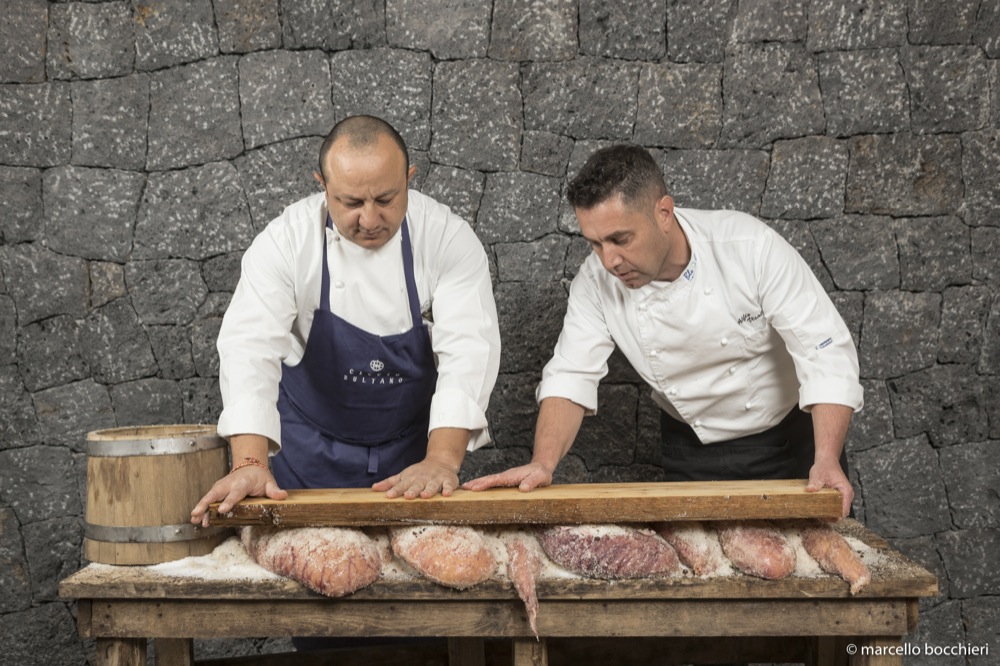
Bottarga by Four Hands
In Sicily, we’ve eaten tuna since 9,230 B.C, the late Neolithic era; we have proof from the graffiti found inside the cave of Genovese in Levanzo.
And today, inside the Ciccio Sultano kitchen we work with the bottarga of red tuna.
Dirtying your hands, together with the chef, with a mix of seriousness and glee, the kind found when you do something that you truly love. Alfio Visalli, together with Sultano, brings to the table this new bottarga, first as a purveyor and second as a guru of taste. The name “bottarga” derives from Arabic butarkhah: fish eggs found within their own sack. The name is storied, but the process is entirely new: a peculiar and unique recipe.
The life of a tuna, once it reaches maturity, is one great big journey that begins in the Mediterranean Sea, overcomes the straight of Gibraltar, and steers towards either the Gulf of Mexico or Canada. From there, the tuna turns back towards the middle of the Mediterranean Sea, landing upon Sardinia or Sicily to fertilize their eggs.
It is in the subsequent phase of processing – when fermentation passes to the addition of aromatics– that Ciccio Sultano declares “the secondary call for flavor.” The two artisans add rose petals, elder, Iblean honey and other secret florals. Though the final product is not finished yet, it is in that moment that something very important happens.
The bottarga of red tuna, dually “signed” by Ciccio and Alfio, is then separated based on the size of the eggs. The largest are nominated “Special Selection.”
It is worth remembering that for the Japanese, bottarga is considered amongst the top three most prized foods: it is usually eaten simply with a thin slice of white turnip and sakè.
Cicco Sultano
pratical mind
